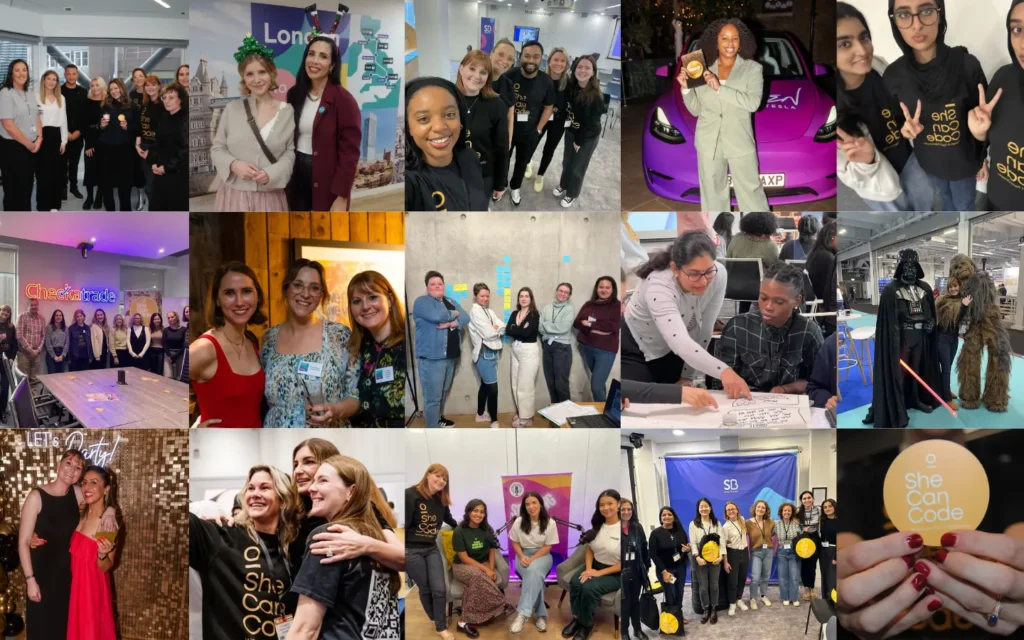COMPETITION FOR TALENT IN TECH IS FIERCE.
In recent years we have seen many companies not only struggling with a shortage of professionals but also failing at keeping a gender balance when recruiting for open roles. Building a remote team could be a solution to this problem.
One of the biggest advantages of remote work and hiring globally is, of course, access to top talent. By looking globally, companies have millions more opportunities to hire than if they were just hiring locally.
Another benefit is diversity. Being surrounded by people from all around the world from different backgrounds and cultures is always beneficial for companies that want to build great products. And since the pool of candidates can be wider, there’s a chance of recruiting more women to close the gender gap in the tech industry.
With many complicated challenges facing the world today, such as climate change or uncertainties over Covid-19, the power of working together on a global basis can’t be underestimated. Tapping into a diverse talent pool can drive innovation to solve complex problems together.
But you can only have a great remote workplace if you have a great team. So, what makes a remote team great and how do you keep them motivated?

WE SAT DOWN WITH ARIEL CAMUS, FOUNDER & CEO OF MICROVERSE TO TAKE A LOOK AT HOW HE BUILDS A GREAT REMOTE WORKFORCE.
Microverse is a school that trains software engineers all around the world and connects them with life-changing international and remote jobs. Previously, Ariel founded TouristEye, a travel startup that Lonely Planet acquired in 2013. Ariel grew up in Argentina, went to school in Europe, built a business in San Francisco, taught in Africa, and lived in Asia. He’s now based in Barcelona, Spain.
FOR ME, IT’S SIMPLE: I FOLLOW THESE THREE BASIC PRINCIPLES:
1) Autonomy: This is the basis for remote work to work. When employees are in different locations, they can’t count on a colleague being available, so they need to be able to work independently. Autonomy doesn’t mean no collaboration or interactions at all. It just means that employees are not blocked by those interactions to progress their work;
2) Trust: In order to have autonomy, you need to hire people you trust. Don’t try to control the hours they work or insist on knowing when they’re working. Implementing surveillance is counterproductive. Without trust remote work is not possible;
3) Transparency: This is what gives people the information they need when they need it, which provides you with autonomy. But transparency also allows you to build trust because when people are transparently sharing their decisions, work, progress, roadblocks and doubts, then you’re more likely to have the right conversations to be able to build trust with each other.
KEEPING THE TEAM MOTIVATED
One of the challenges of having a remote team is to keep them engaged and motivated. At Microverse, we have team members working from all over the world supporting a student base from more than 100 countries. It is crucial to be aware of diversity in our team and student body. Not just different time zones but also different accents, religions and cultures, which can all have an impact on the way you communicate and give feedback.
This is why it is of utmost importance to pay attention to documentation so information is available and easily accessible to all team members. If something doesn’t get documented, people don’t have the context, which means they can’t autonomously participate. This is essential to build the transparency needed to build a remote team in the first place.
Another vital pillar in keeping your team engaged is encouraging them to communicate asynchronously. Due to time zones, people will work at different times of the day. Remote teams need to be able to work around asynchronous communication and collaboration (messages that aren’t shared or received in real time).
Trust can be given, but it also has to be earned. Work with people who are open to receiving feedback and growing. Written feedback across time zones is more likely to be misinterpreted or considered less timely. At Microverse, we use Loom as it lets you record your screen, audio and camera to share messages. This makes it less likely to be misinterpreted in the feedback they are receiving while still allowing for feedback to be given and received asynchronously.
By keeping people happier and more motivated for longer, they’re more likely to be successful professionals and key members of your team. This will result in a team that is more connected and ready to embrace remote work, diversity, and the benefits that come with global teams.








